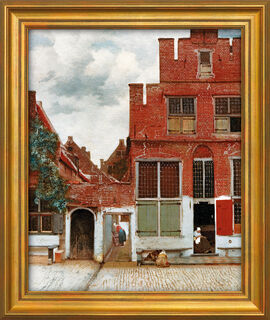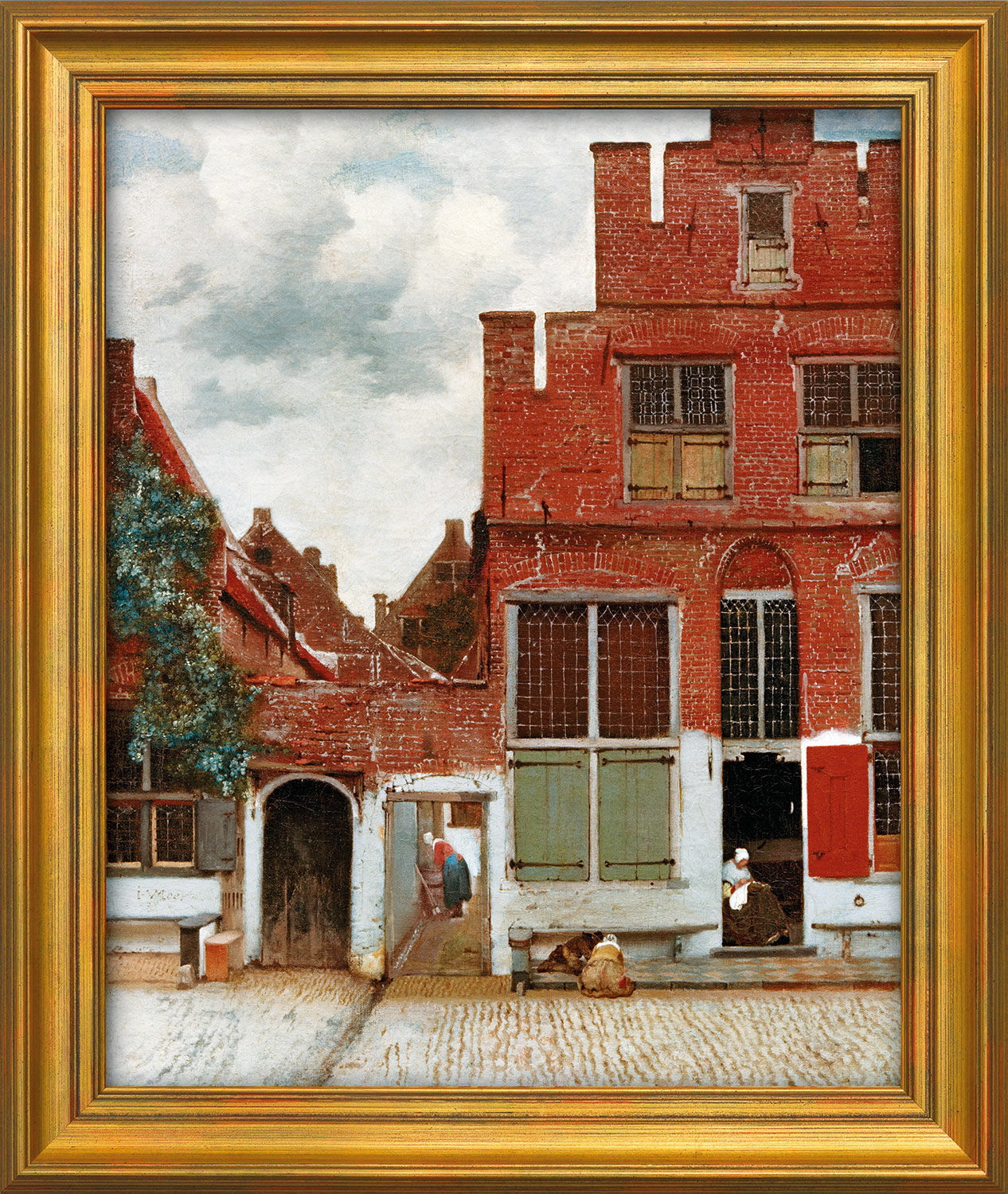Picture "Street in Delft" (1657/58), framed


Picture "Street in Delft" (1657/58), framed
Quick info
limited, 199 copies | numbered | certificate | reproduction, Giclée print on canvas | on stretcher frame | framed | size approx. 61 x 51 cm (h/w)
Detailed description
Picture "Street in Delft" (1657/58), framed
Original: 1657/58, oil on canvas, 53.5 x 43.5 cm, Amsterdam, Rijksmuseum.
To achieve a reproduction that is both authentic and vibrant, the original artwork was transferred onto an artist's canvas using the Fine Art Giclée process and then stretched onto a stretcher frame. Limited edition 199 copies, with certificate, numbered on the back. Framed in handmade, golden solid wood frame with metal leaf. Size approx. 61 x 51 cm (h/w).
About Jan Vermeer van Delft
Jan Vermeer is one of the most important Dutch painters of the Baroque epoch. He was baptised on October 31, 1632 in Delft and buried there on December 15, 1675. As there was no school of painting in Delft at that time, the son of a silk weaver, art dealer and innkeeper was trained as a craftsman. His admission to the Delft Guild of St. Luke in 1650 testifies to his activity as a master painter. Only 37 of his paintings have survived to this day. His main theme was genre painting, as there are only a few portraits or religious paintings in his œuvre.
The interior views radiate silence, security, and inner peace. The painter from Delft was able to achieve these effects with subtle colour harmonies and refined shadows. He was also a master of the photographic perspective. The genre paintings show few figurative scenes, to which symbolic content is often attributed.
A special mention should be given to Vermeer's Delft City View of 1661, whose naturalism testifies to a high level of mastery. In addition, "The Girl with the Pearl Earring" became the epitome of beauty and grace. For the painter, it was a challenge to bring the viewer into contact with the model. The young woman's eye contact skilfully establishes a connection, but at the same time achieves distance again through the body that is turned away. Many generations of art lovers have rightly been fascinated by the extraordinary expression of this painting.
Vermeer strove for perfection in his painting, often produced only just four paintings a year. As a result, the father of eleven children struggled with financial hardship, which increased during the last years of his life. Right after his death, Jan Vermeer fell into oblivion. It was not until the middle of the 19th-century that people learned to appreciate the quality of his paintings.
Epochal term for the art of the 17th century. The Baroque style of art, which originated in Rome around 1600, permeated visual arts, literature and music practically all over Europe within a very short period of time and lasted until 1770 in the visual arts. The last phase is generally characterised by Rococo.
Characteristic features include: the pulsating movement of all forms, the abolition of boundaries between architecture, painting and sculpture, that resulted in the epoch typical "Gesamtkunstwerk" ("total work of art"), and especially the purposeful use of light, which became an important artistic component. The subordination of the individual parts to the whole resulted in the creation of a unified and, at the same time, dynamic space, which is fully expressed in the magnificent buildings of this period.
The Baroque art, with its penchant for grandeur, splendour and rushing abundance, clearly reflects the desire for representation, which was a concern of secular and ecclesiastical, especially the Catholic, patrons of the time, who were strengthened by the Counter-Reformation. In painting, characteristic features of the Baroque, are manifested in the altar and ceiling painting, history and portrait.
Typical representatives include artists such as Anthony van Dyck, Peter Paul Rubens as well as Gian Lorenzo Bernini in the field of sculpture.
Depiction of typical scenes from daily life in painting, whereby a distinction can be made between peasant, bourgeois and courtly genres.
The genre reached its peak and immense popularity in Dutch paintings of the 17th century. In the 18th century, especially in France, the courtly-galant painting became prominent while in Germany the bourgeois character was emphasised.
Giclée = derived from the French verb gicler "to squirt, spurt".
The giclée method is a digital printing process. It is a high-resolution, large-format printout on an inkjet printer with special different-coloured dye- or pigment-based inks (usually six to twelve). The colours are fade-proof, i.e. resistant to harmful UV light. They have a high richness of nuance, contrast and saturation.
The giclée process is suitable for art canvases, handmade and watercolour paper as well as for silk.






